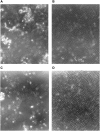Selective killing of tumors deficient in methylthioadenosine phosphorylase: a novel strategy
- PMID: 19478948
- PMCID: PMC2684647
- DOI: 10.1371/journal.pone.0005735
Selective killing of tumors deficient in methylthioadenosine phosphorylase: a novel strategy
Erratum in
- PLoS One. 2010;5(4). doi: 10.1371/annotation/54fad81d-c975-4b30-bb2b-249650ec3d66
Abstract
Background: The gene for methylthioadenosine phosphorylase (MTAP) lies on 9p21, close to the gene CDKN2A that encodes the tumor suppressor proteins p16 and p14ARF. MTAP and CDKN2A are homozygously co-deleted, with a frequency of 35 to 70%, in lung and pancreatic cancer, glioblastoma, osteosarcoma, soft-tissue sarcoma, mesothelioma, and T-cell acute lymphoblastic leukemia. In normal cells, but not in tumor cells lacking MTAP, MTAP cleaves the natural substrate, 5'-deoxy-5'-methylthioadenosine (MTA), to adenine and 5-methylthioribose-1-phosphate (MTR-1-P), which are then converted to adenine nucleotides and methionine. This distinct difference between normal MTAP-positive cells and tumor MTAP-negative cells led to several proposals for therapy. We offer a novel strategy in which both MTA and a toxic adenine analog, such as 2,6-diaminopurine (DAP), 6-methylpurine (MeP), or 2-fluoroadenine (F-Ade), are administered. In MTAP-positive cells, abundant adenine, generated from supplied MTA, competitively blocks the conversion of an analog, by adenine phosphoribosyltransferase (APRT), to its active nucleotide form. In MTAP-negative tumor cells, the supplied MTA cannot generate adenine; hence conversion of the analog is not blocked.
Principal findings: We show that this combination treatment--adenine analog plus MTA--kills MTAP-negative A549 lung tumor cells, while MTAP-positive human fibroblasts (HF) are protected. In co-cultures of the breast tumor cell line, MCF-7, and HF cells, MCF-7 is inhibited or killed, while HF cells proliferate robustly. 5-Fluorouracil (5-FU) and 6-thioguanine (6-TG) may also be used with our strategy. Though neither analog is activated by APRT, in MTAP-positive cells, adenine produced from supplied MTA blocks conversion of 5-FU and 6-TG to their toxic nucleotide forms by competing for 5-phosphoribosyl-1-pyrophosphate (PRPP). The combination of MTA with 5-FU or 6-TG, in the treatment of MTAP-negative tumors, may produce a significantly improved therapeutic index.
Conclusion: We describe a selective strategy to kill tumor cells lacking MTAP.
Conflict of interest statement
Figures





References
-
- Williams-Ashman HG, Seidenfeld J, Galletti P. Trends in the biochemical pharmacology of 5′-deoxy-5′-methylthioadenosine. Biochem Pharmacol. 1982;31:277–288. - PubMed
-
- Toohey JI. Methylthioadenosine nucleoside phosphorylase deficiency in methylthio-dependent cancer cells. Biochem Biophys Res Commun. 1978;83:27–35. - PubMed
-
- Nobori T, Szinai I, Amox D, Parker B, Olopade OI, et al. Methylthioadenosine phosphorylase deficiency in human non-small cell lung cancers. Cancer Res. 1993;53:1098–1101. - PubMed
-
- Caldas C, Hahn SA, da Costa LT, Redston MS, Schutte M, et al. Frequent somatic mutations and homozygous deletions of the p16 (MTS1) gene in pancreatic adenocarcinoma. Nat Genet. 1994;8:27–32. - PubMed
MeSH terms
Substances
LinkOut - more resources
Full Text Sources
Other Literature Sources
Molecular Biology Databases
Research Materials
Miscellaneous

